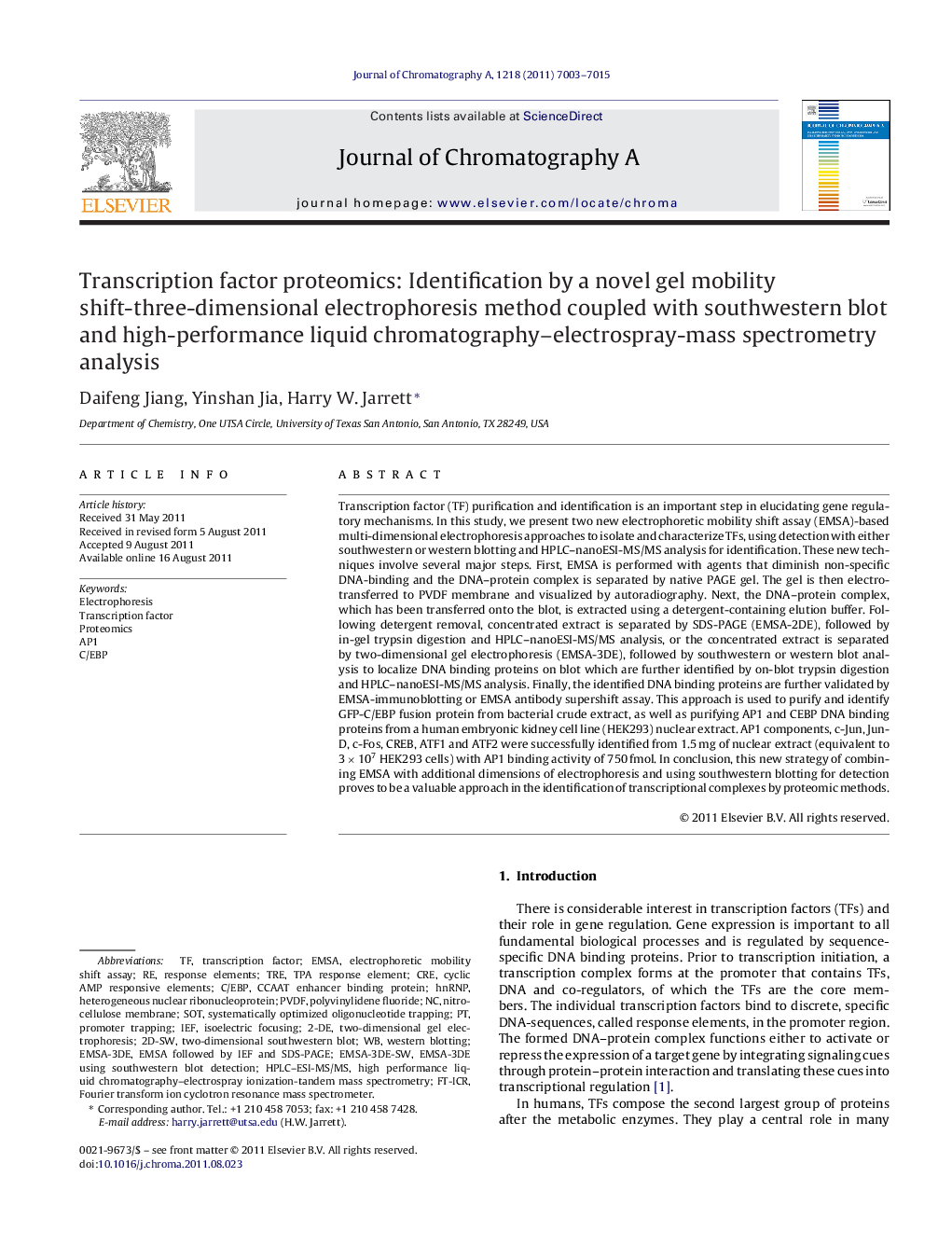| کد مقاله | کد نشریه | سال انتشار | مقاله انگلیسی | نسخه تمام متن |
|---|---|---|---|---|
| 1201817 | 965045 | 2011 | 13 صفحه PDF | دانلود رایگان |

Transcription factor (TF) purification and identification is an important step in elucidating gene regulatory mechanisms. In this study, we present two new electrophoretic mobility shift assay (EMSA)-based multi-dimensional electrophoresis approaches to isolate and characterize TFs, using detection with either southwestern or western blotting and HPLC–nanoESI-MS/MS analysis for identification. These new techniques involve several major steps. First, EMSA is performed with agents that diminish non-specific DNA-binding and the DNA–protein complex is separated by native PAGE gel. The gel is then electrotransferred to PVDF membrane and visualized by autoradiography. Next, the DNA–protein complex, which has been transferred onto the blot, is extracted using a detergent-containing elution buffer. Following detergent removal, concentrated extract is separated by SDS-PAGE (EMSA-2DE), followed by in-gel trypsin digestion and HPLC–nanoESI-MS/MS analysis, or the concentrated extract is separated by two-dimensional gel electrophoresis (EMSA-3DE), followed by southwestern or western blot analysis to localize DNA binding proteins on blot which are further identified by on-blot trypsin digestion and HPLC–nanoESI-MS/MS analysis. Finally, the identified DNA binding proteins are further validated by EMSA-immunoblotting or EMSA antibody supershift assay. This approach is used to purify and identify GFP-C/EBP fusion protein from bacterial crude extract, as well as purifying AP1 and CEBP DNA binding proteins from a human embryonic kidney cell line (HEK293) nuclear extract. AP1 components, c-Jun, Jun-D, c-Fos, CREB, ATF1 and ATF2 were successfully identified from 1.5 mg of nuclear extract (equivalent to 3 × 107 HEK293 cells) with AP1 binding activity of 750 fmol. In conclusion, this new strategy of combining EMSA with additional dimensions of electrophoresis and using southwestern blotting for detection proves to be a valuable approach in the identification of transcriptional complexes by proteomic methods.
Journal: Journal of Chromatography A - Volume 1218, Issue 39, 28 September 2011, Pages 7003–7015